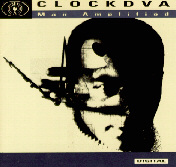
Man-Amplified
- Man-Amplifiers
- Techno Geist
- Axiomatic And Heuristic
- NYC Overload
- Transitional Voices
- Bitstream
- Fractalize
- Final Program
- Dark Attractor
- Memories of Sound
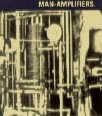 MAN-AMPLIFIERS
MAN-AMPLIFIERS
The first users of tools were not men (a fact appreciated only recently)
but pre-human anthropods. The old idea that man invented tools is
misleading, more accurately tools invented man - so began the symbiosis.
The physicist J.D. Bernal's book publishes in 1929 called "The World, The
Flesh and The Devil" decided that the numerous limitations of the human
body could be overcome only by the use of mechanical attachments or
substitutes until eventually all that might be left of man's original
organic body would be the brain. The word "Cyborg" (cybernet organism)
devised by Dr. Manfred Clynes and Nathan Kline, define a cyborg as "An
exogenously extended organizational complex, functioning as a homeostatic
system." Along with other computer experts Dr. Clynes believes that
intelligence need not be confined to the DNA structure. He also believes
that life is more a matter of relationships and organizations than of
material. Clynes points out an understanding of the nature of our thoughts
in terms of their mathematical, electronic and time-space identities which
will permit us to communicate better than we do at the present time, we
may find new shapes and discover means of utilizing them to communicate
in entirely new ways, ways that cannot presently be imagined. A.C Clarke
sees the outcome of the future of the man machines as eventually a machine
based evolution. Whatever the key may be to longevity, man continues to
amplify himself ever onwards in his desire to expand the nature of the
self towards new points, new levels, that currently cannot be accurately
predicted. The man amplifier is presently increasing its volume.
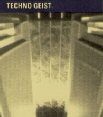 TECHNO-GEIST
TECHNO-GEIST
The Italian anatomist Luigi Galvani (who inspired Marry Wollstonecraft
Shelley's classic novel Frankenstein 1818) discovered in 1786 that electricity
was one of the essential secrets of life. This discovery galvanized society,
its future applications are only just beginning to be envisaged. Its
infiltration and uses are beyond calculation, its symbiosis presently is even
greater than before, as technology increases the use of electricity becomes
even more fundamental to the workings of machines - Machines Breeds Machine.
Duchamp's futuristic vision of allegorical machines is one of the true
marriages between matter and spirit, art and technology, "the spirit is the
bride". Duchamp invented a new physics of his own, closer to Jarr's pataphysics
than to conventional science, a fourth dimensional engineering that goes beyond
the rational axiomatic rigidity of scientific law. One of Duchamp's greatest
works "The Large Glass or the Bride Stripped Bare by her Bachelors Even"
(1915-23) represents the most difficult and mysterious of all domains, the
fourth dimensional phenomenon of sex. These theoretical suggestions which were
later to be discovered by Baron Von K. Reichenbach and Wilhelm Reich, isolate
and demonstrate a tangible biological energy generated by the human body
(particular during sexual activity). These discoveries can only enhance yet
even more new possibilities in the future exploration of the man machine
symbiosis in all levels of creation. As technology accelerates and new
knowledge formulates so does the spirit in its needs to expand its own
awareness, only in the pursuit of knowledge of all things can we discover
ourselves.
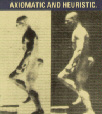 AXIOMATIC AND HEURISTIC
AXIOMATIC AND HEURISTIC
The most current research into the mind and computers has totally dismissed the
idea that packaging raw data for bulk digestion by computers like the early
artificial intelligence programs (used by Newell & Simon's Logic Theory
Machine) that treated data in Alan Turing terms. These designers assumed that
knowledge is purely information that could be formalized, codified and then
programmed into computer languages, was the key to cognitive modeling. Instead
recent work shows that the more complex and sophisticated pathways to problem
solving such as the heuristics people use to latch onto relevant data and
reject irrelevant are of paramount importance, indeed the operand in human
intelligence. "Knowledge in expert systems is a melange of fact, prejudice and
beliefs and most important heuristic strategies" says Edward Feigenbaum
(computer science professor at Stanford University and one of the leading
voices in California's artificial intelligence community). Boolean algebra is
an axiomatic system like Euclidean geometry. The writing up of a system into
axioms (or postulates) and theorems and rules of influence is much like
describing a machine in blue print form. Methods of proof within such axiomatic
systems are either algorithmic (exhaustive and precise) or heuristic (short
cuts and uncertain) and these methods prove to be very important to our search
for intelligent machines since much of the haphazard type of information
processing and the making of off-the-cut plans and decisions are essentially
heuristic in nature. Algorithms will never produce machine intelligence.
Programmed heuristics on the other hands can make the computer provide results
that are at once efficient and intelligent. Again intelligence is proving to be
more that just syntactic or symantec.
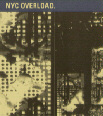 NYC OVERLOAD
NYC OVERLOAD
"Everything is Sentient" Pythogoras. A "failure of logic" in a "paranoid
democracy", ghost in the machine? Sentient Electronics? As technology develops
also our dependence on that system increases, even fault tolerant computers are
vulnerable to overload, no standards have as yet been developed, "software is
not predictable". The nine hour breakdown of AT&T's long distance telephone
network in New York dramatizes the vulnerability of complex computer systems
everywhere and that chaos is evident is all systems. Chaos breaks across the
line that separates scientific disciplines because it is a science of the
global nature of systems. Science was heading for a crisis of increasing
specialization, dramatically that specialization has reversed because of chaos.
Chaos is turning back a trend in science towards reductionism, the analysis of
systems in terms of their constituent parts, quarks, chromosomes, or neurons,
chaos is looking at the whole. We have to look at chaos. Norbert Wiener, father
of cybernetics, defined information as "essentially a negative entropy". In
modern communication theory entropy is equated with noise which causes a waste
of information. According to the second law of thermodynamics "the general
direction of physical events is towards decrease in order and organization".
Schrodinger was led to postulate the existence of an ego which ultimately
"controls the motion of the atoms". Whatever the theory, something unseen and
as yet unknown is at work behind the mechanism of the world and the universe.
From the beginning of consciousness man has been all too aware of the existence
of some mysterious force, and we can see this most obviously reflected in his
spirituality.
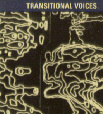 TRANSITIONAL VOICES
TRANSITIONAL VOICES
Dr. Konstatin Raudives' book "The Inaudible becomes Audible", is a systematic
documentation of experiments using tape recorders to record and decode voices
from extra-dimensional realms. Numerous theories have been put forward to
explain this phenomena, such as "synchronicity", a theory introduced by C.G.
Jung. It assumes non-casual but meaningful and related events taking place at
one and the same time. The spiritualist theory, being that the voices
manifesting on tape emanate from transcendental space. Should it become
possible to substantiate this assumption scientifically, it would be the first
empirical evidence arrived at by experiments of the existence and the activity
of transcendental intelligences. The animistic hypothesis presumes that
poltergeist phenomena, such as materializations and spirit messages are part of
the psyche (anima) of the medium, these psychic emanations can take shape and
impress themselves on our sense organs, our eyes, ears, and sense of touch.
These phenomena are so numerous and well attested by reliable witnesses that
they have to be accepted as empirically proved manifestations. if the
"animistic" interpretations were proved correct it would be evidence through
experiment of a purely mental process, taking shape in a physical (acoustic)
form; in other words, of psychic forces influencing matter. Further research
into the possibilities of amplification of sound and new forms of
sonotechnology will open up new boundaries never before heard of envisaged.
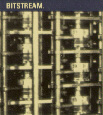 BITSTREAM
BITSTREAM
Claude E. Shannon, father of information theory, whose work "The Mathematical
Theory of Communication" is one of the greatest works in the annals of
technological thought. It showed how an algebra invented in the mid 1800's by
British mathematician George Boole, (Boolean Algebra) could represent the
working of switches and relays in electronic circuits, its implications were
profound. He defined the overall potential for information in a system of
messages as its entropy, which in thermodynamic denotes the randomness of a
system. Shannon defined the basic unit of information which came to be called a
bit. Information could then be encoded as bits. Code compresses information
into its most compact form. Shannon's ideas were almost too prescent to have
an immediate impact. Vacuum tube circuits simply could not calculate the
complex codes needed to approach the Shannon limit. Not until early 1970's,
with the advent of high speed integrated circuits did engineers begin to fully
exploit information theory. Today Shannon's insights have shaped virtually all
systems that store, process or transmit information in digital form. Obviously
this information applies to the above applications but science and computer
technology is returning to the much older concept of connectionism. "Does not
the fiction of an isolated object imply a kind of absurdity, since this object
borrows its physical properties from the relations which it maintains with all
others and owes each of its determinations, and consequently its very
existence, to the place which it occupies in the universe as a whole." Bergson:
Matter and Memory 1910.
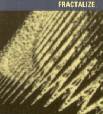 FRACTALIZE
FRACTALIZE
Devised by Benoit Mandelbrot from the latin term Fractus, from the verb
Frangere, to break. The resonance of the main English cognates - Fracture and
Fraction (noun and adjective) (English and French). Mandelbrot devised the word
Fractal to describe a new mathematical geometry, part of the new science of
chaos. "A fractal is a geometric shape, a geometric shape having a special
property that as you look closer and closer to it you see it is essentially the
same thing." The notion of self-similarity strikes ancient chords in our
culture. An old strain in western thought honors the idea. Leibniz imagined
that a drop of water contained a whole teeming universe containing in turn
water drops and new universes within. "To see the world in a grain of sand."
Blake. When spermatozoa was first discovered it was thought to be a homunculus,
a human, tiny, but fully formed. But self-similarity receded as scientific
principle, and the process of ontogenetic development is far more interesting
that mere enlargement. The myth died hard as the human vision was extended by
telescopes and microscopes. The first discoveries were realizations that each
change of scale brought new phenomena and new kinds of behavior. For modern
particle physicists, the process has never ended. Every new accelerator with
its increase in energy and speed, extends sciences field of view to tinier
particles and briefer time scales and every extension seem to bring new
information. But physicists wanted to know more. They wanted to know why. There
were forms in nature, not visible forms, but shapes embedded in the fabric of
motion, waiting to be revealed.
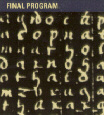 FINAL PROGRAM
FINAL PROGRAM
Could be said to be the ultimate software, once programmed it expands
indefinitely, redeveloping its own structure and evolution, designing new
systems so that it can activate new forms of existence, outgrowing its own
limitations as it proliferates to new states of being. The final program could
also be the development of the finest organic computer we at present know. The
human brain whose limitless capacity we have never harnessed, but whose
possibilities are endless. The quest for the development of evolution can move
in two ways, outwards or inwards. The outward projection seems to have
progressed and developed more rapidly than the inward, eventually if we are
succeed then the two must join. For eons this knowledge of arcane connections
has been employed in mythology and within the occult science, now we must go
back to the beginning and develop the tool that gave us light. In a recent
article on The Connection Machine - a new breed of parallel computers, W.D.
Daniel Hillis, graduate of M.I.T. and co-director of the Thinking Machine
Corporation, says "The applications worthy of a billion-processor machine are
those that entail a radical change in the way we think about computation. A
parallel computer with a billion processors might provide a basis for the
computational utility analogous to the existing electric utilities. Just as a
plant generates electricity that is transmitted to individual appliances, a
huge parallel computer could provide a computational power to a city's worth of
robots and workstations."
MEMORIES OF SOUND
The electrical signals that are conducted to the brain by the auditory nerves
fibers are like the impulses that activate a computer. They are not themselves
sounds; they are symbols of sounds. In this role they evoke different reactions
in the various sections of the brain which govern responses. The brain has a
sound memory center which begins accumulating sounds even before birth. We are
able to distinguish between 400,000 signals. It is in the brain where the
journey of sound ends, an instant after it begins that hearing and the memory
of sound becomes the keynote of all communications.
MAN-AMPLIFIED
There is real possibility that we may one day design a machine that is more
intelligent than ourselves. There are all sorts of biological limitations on
our own intellectual capacity, ranging from limited number of computing
elements we have available in our craniums to the limited span of human life
and the slow rate at which incoming data can be accepted. There is no reason to
suppose that such stringent limitations will apply to computers of the future,
it will be much easier for computers to bootstrap themselves on the experiences
of previous computers than it is for man to benefit from the knowledge acquired
from his predecessors. Moreover, if we can design a machine more intelligent
than ourselves, then a fortiori that machine will be able to design one more
intelligent than itself. Dr. Marvin Minsky of M.I.T. has predicted:"As the
machine improves we shall begin to see all the phenomena associated with the
terms 'consciousness', 'intuition', and 'intelligence'. It is hard to say how
close we are to this threshold, but once it is crossed the world will not be
the same; is unreasonable to think that machines could become nearly as
intelligent as we are and then stop, or to suppose that we will always be able
to compete with them in wit and wisdom. Whither or not we could retain some
sort of control of the machines, assuming that we would want to, the nature of
out activities and aspirations would be changed utterly by the prescence on
earth of intellectually superior entities. But perhaps the most portentous
implication in the evolving symbiosis of the human bio-computer and his
electronic brainchild was voice by Dr. Irving John Good of Trinity College,
Oxford, in his prophetic statement: "The first ultra-intelligent machine is the
last invention that man need make."
ClockDVA, Man-Amplified, Conte Disc 182, (C) 1992 Anterior Research
All essays written by Adi Newton
[Clock DVA]
Last Modified:
 TECHNO-GEIST
TECHNO-GEIST
 MAN-AMPLIFIERS
MAN-AMPLIFIERS  AXIOMATIC AND HEURISTIC
AXIOMATIC AND HEURISTIC NYC OVERLOAD
NYC OVERLOAD TRANSITIONAL VOICES
TRANSITIONAL VOICES BITSTREAM
BITSTREAM FRACTALIZE
FRACTALIZE FINAL PROGRAM
FINAL PROGRAM